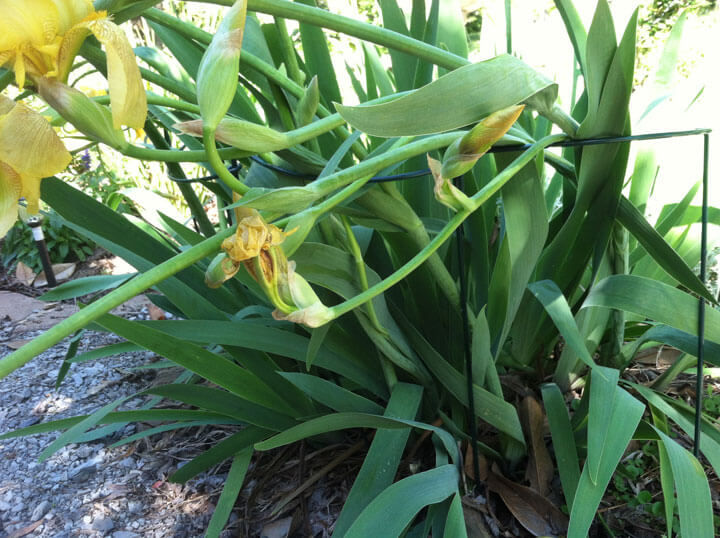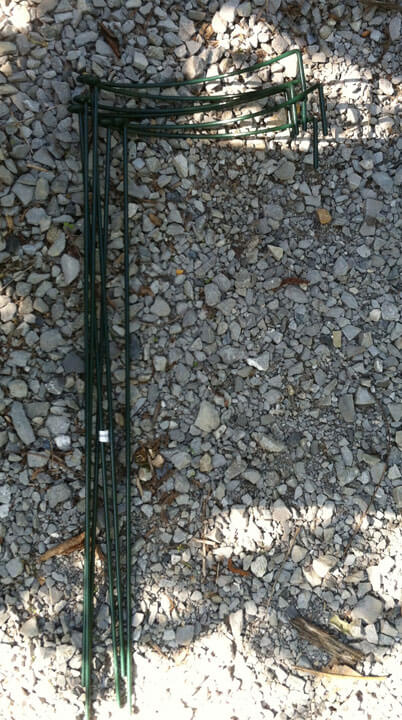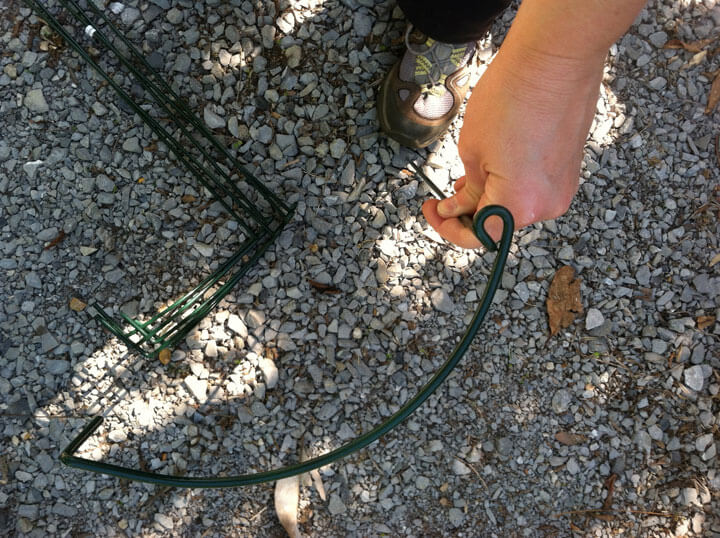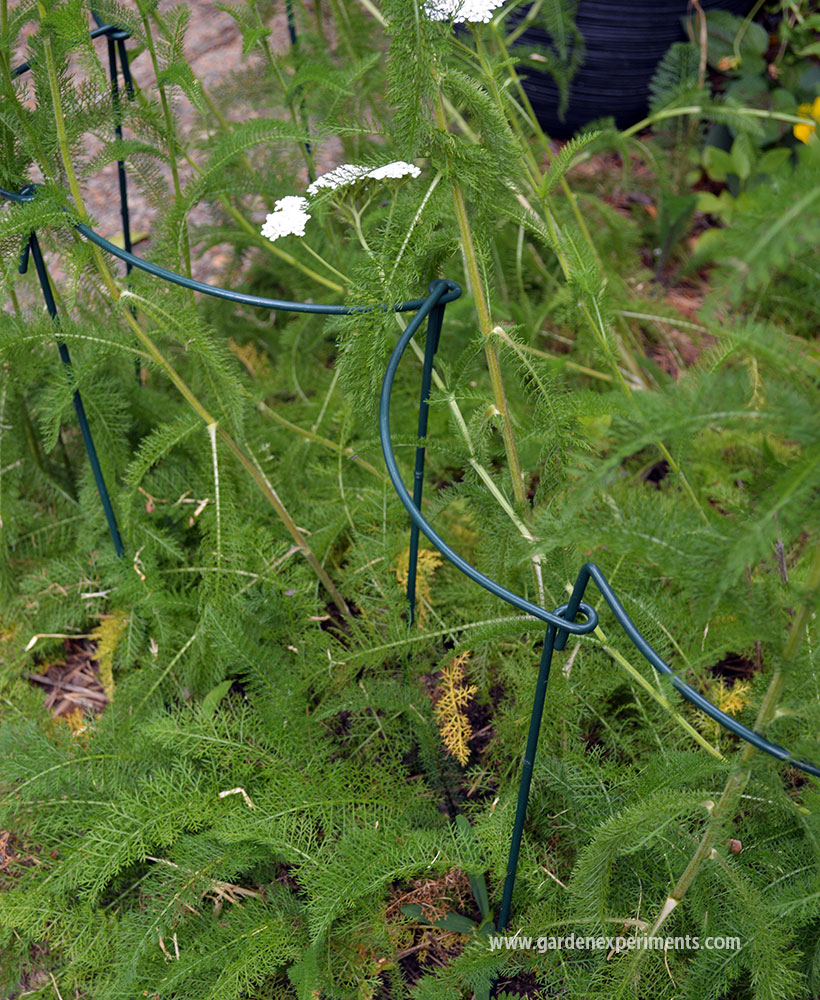 The irises were gorgeous this March and April with many yellow flowers blooming in the front yard along a stone path. One good thunderstorm came through and flattened most of the flower stalks. Now we were stepping over the blooms to avoid crushing any future flowers. Needless to say this didn’t work very well.
The irises were gorgeous this March and April with many yellow flowers blooming in the front yard along a stone path. One good thunderstorm came through and flattened most of the flower stalks. Now we were stepping over the blooms to avoid crushing any future flowers. Needless to say this didn’t work very well.
Luckily, I remembered that I had purchased some stakes last year just for this purpose. I hooked them together to form a wall in front of the irises adjacent to the stone path. Now we no longer have to step over the flowers!
This content includes affiliate links. I get a small percentage of the sale for purchases made through links in this post. However, I use each product I review and only recommend those that I like and have worked well. Read my disclosure for more information.
Buy the Curved Linking Supports for your flowers
Curved Linking Stake Flower Supports Review
These curved stakes link together so that you can configure them to create a wall of stakes or a circle, whatever you need to support your plants.
PROS
- Blend into the background
- Can be configured to fit any need
- Are sturdy
- Are coated in plastic so they won’t rust
These stakes are coated in a green polyethelyne, so they blend into the background when holding up your flowers. The coating also means these stakes won’t rust and will be easy to store.
The steel is thick enough to be sturdy and won’t easily bend when pushed into the ground.
CONS
- If you aren’t using these in a circle, the last stake will be left with nothing to attach to
How They Work
You push the end of the stake into the ground and then connect the other end the beginning of the next stake. Each stake only has one support that goes into the ground. The linking of the stakes makes a sturdier support. This means that the last stake will be left kind of hanging in the air. It will still provide support, but it isn’t as strong as the others that are linked.
Details
You can purchase these stakes in a variety of sizes: small, medium, or large, depending on the type of plant you wish to support.
I really like these due to the flexibility of uses and their durability. I definitely prefer this over using a stake and some string to tie up tilting plants.
Where to buy:
Get them here:
Buy the Curved Linking Supports for your flowers
If you’re looking for broader coverage across a border, here’s a similar product designed just for the edge of paths:
20″ Tidy Path Supports, Set of 6
See the illustration below for these “Tidy Path Supports”. These stakes are three-scallops sections with a stake at each end for more coverage length-wise.






